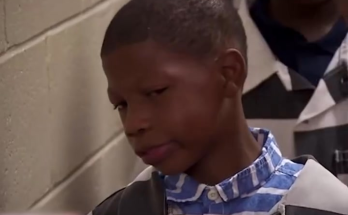
Bruce Willis, an actor whose name became synonymous with blockbuster action films and memorable performances, is now navigating one of the most personal and challenging battles of his life. At 70 years old, the legendary star lives with frontotemporal dementia (FTD), a progressive condition that affects communication, mobility, and behavior.
For decades, audiences around the world watched Bruce embody roles of strength, wit, and resilience. From the “Die Hard” series to heartwarming dramas and comedies, he shaped Hollywood in a way that continues to inspire both fans and fellow actors. Today, however, Bruce’s story shines a light not on the roles he played on-screen, but on the enduring values of family, compassion, and unconditional love.
His family, led by his wife Emma Heming Willis, has made difficult but thoughtful choices to prioritize both Bruce’s comfort and their children’s stability. This journey reflects not only their devotion but also the countless untold stories of families caring for loved ones with dementia.
Moving Into a Specialized Home: A Decision Rooted in Care
In recent years, Bruce’s health needs have grown increasingly complex. To meet these needs, he has transitioned into a single-story home nearby, fully staffed with professional caregivers who provide round-the-clock support. The environment is calm, safe, and intentionally designed to minimize stress—an essential aspect for someone living with dementia.
For Emma, this was not an easy decision. As a wife and mother, she faced the heartache of adjusting family life while protecting the well-being of their young daughters, Mabel and Evelyn. By choosing this arrangement, Emma sought to create stability for the children while ensuring that Bruce receives the specialized care he requires.
She has expressed that Bruce, known for his deep love for his family, would have wanted a plan that prioritized his daughters’ happiness and sense of normalcy. Though the arrangement involves physical separation, it does not diminish the family’s emotional closeness.
Responding to Public Criticism With Compassion
When news of Bruce’s living situation became public, some individuals questioned the family’s decision. Emma responded not with defensiveness, but with empathy and understanding. She explained that unless someone has walked the path of being a caregiver, it is difficult to fully grasp the realities involved.
Her openness was not meant to seek approval but to raise awareness about the challenges caregivers face daily. By sharing her family’s journey, Emma has helped others feel less isolated and more supported, creating a ripple effect of compassion within the broader community.
The Progression of Bruce’s Condition
Reports from those close to Bruce reveal that his illness has advanced significantly. He has lost the ability to speak, read, and walk independently, which stands in stark contrast to the energetic and confident persona audiences once saw on screen.
Frontotemporal dementia affects the brain in ways that gradually strip away essential abilities many take for granted. Yet, even as his condition progresses, Bruce remains surrounded by love. His family ensures that his days are filled with presence, connection, and warmth, even when words and movement become difficult.
Daily Visits and Ongoing Connection
Though Bruce lives in a specialized residence, he is far from isolated. Emma and their daughters visit him daily, sharing meals and maintaining the routines that bring comfort and familiarity. These moments keep alive the closeness that defines their bond.
Bruce’s older daughters—Rumer, Scout, and Tallulah, from his earlier marriage to Demi Moore—also remain a vital part of his support system. Their visits bring laughter, music, and cherished memories, helping to sustain a sense of continuity and togetherness.
The family’s blended dynamic, once a topic of media fascination, has now become a beautiful example of unity in the face of difficulty. Demi Moore herself has been publicly supportive, showing that love and commitment to family transcend old boundaries.
Understanding Frontotemporal Dementia
To fully appreciate the significance of Bruce’s journey, it is important to understand what FTD is and how it differs from other forms of dementia.
- FTD primarily affects the frontal and temporal lobes of the brain, which are responsible for language, behavior, and decision-making.
- Unlike Alzheimer’s, which often begins with memory loss, FTD first impacts communication, personality, and movement.
- It often develops earlier in life, typically between ages 40 and 65, making its impact especially challenging for families with young children.
For many caregivers, the experience is marked by unpredictability, emotional strain, and the need for constant adaptation. By speaking openly about Bruce’s diagnosis, the Willis family has helped raise public awareness about a condition that is often misunderstood and under-discussed.
The Emotional Weight of Caregiving
Caregiving is an act of love, but it is also one of the most demanding roles a person can take on. Emma has been candid about the emotional weight that comes with balancing her role as a wife, a mother, and an advocate.
Caregivers often experience:
- Emotional exhaustion from watching a loved one’s abilities decline.
- Physical fatigue from the demands of round-the-clock care.
- Social isolation as responsibilities limit opportunities for personal time.
- Financial strain due to medical expenses and the need for specialized support.
Emma’s honesty in sharing these realities helps dismantle the stigma and silence that often surround dementia care. Her willingness to open up gives strength to countless families walking similar paths.
Preserving Legacy and Celebrating Life
Even as Bruce’s abilities change, his legacy remains unshakable. His decades-long career brought joy, excitement, and inspiration to millions. Films like Die Hard, The Sixth Sense, and Armageddon remain cultural touchstones, reminders of the artistry and charisma he brought to every role.
The Willis family does not focus solely on what has been lost, but on what remains—love, connection, and shared memories. They celebrate Bruce’s life not only through his films but also through the intimate moments of togetherness that dementia cannot erase.
A Broader Message: Resilience in the Face of Illness
https://googleads.g.doubleclick.net/pagead/ads?gdpr=0&client=ca-pub-8681813503854240&output=html&h=280&adk=736578315&adf=3523246151&w=658&fwrn=4&fwrnh=100&lmt=1756688876&num_ads=1&rafmt=1&armr=3&sem=mc&pwprc=6356162351&ad_type=text_image&format=658×280&url=https%3A%2F%2Faliacar.net.tr%2F2025%2F08%2F31%2Fa-beloved-hollywood-icon-facing-a-new-chapter%2F&fwr=0&pra=3&rh=165&rw=658&rpe=1&resp_fmts=3&wgl=1&fa=27&uach=WyJXaW5kb3dzIiwiMTkuMC4wIiwieDg2IiwiIiwiMTM5LjAuNzI1OC4xNTUiLG51bGwsMCxudWxsLCI2NCIsW1siTm90O0E9QnJhbmQiLCI5OS4wLjAuMCJdLFsiR29vZ2xlIENocm9tZSIsIjEzOS4wLjcyNTguMTU1Il0sWyJDaHJvbWl1bSIsIjEzOS4wLjcyNTguMTU1Il1dLDBd&abgtt=6&dt=1756688789468&bpp=1&bdt=2733&idt=1&shv=r20250827&mjsv=m202508260101&ptt=9&saldr=aa&abxe=1&cookie=ID%3D37857b6e5950bbb7%3AT%3D1755307519%3ART%3D1756688605%3AS%3DALNI_Mb5KhFS7Y6ZY_FUbD9QceIZza8fqw&gpic=UID%3D00000f1b4e1097e7%3AT%3D1755307519%3ART%3D1756688605%3AS%3DALNI_MZ8MfCfFKnGOwliA-TOsEixcle1uA&eo_id_str=ID%3Dd02dba7bb6434703%3AT%3D1755307519%3ART%3D1756688605%3AS%3DAA-AfjYLbVBm4qfFpUJfIvc8YJIA&prev_fmts=0x0%2C1200x280%2C658x280%2C658x280%2C658x280%2C1005x124%2C658x280%2C658x280%2C658x280%2C658x280%2C658x280&nras=12&correlator=4320811783145&frm=20&pv=1&u_tz=420&u_his=5&u_h=864&u_w=1536&u_ah=816&u_aw=1536&u_cd=24&u_sd=1.25&dmc=8&adx=431&ady=7872&biw=1521&bih=695&scr_x=0&scr_y=5123&eid=31094363%2C31094393%2C95362655%2C95369705%2C95369802%2C95370343%2C31094349%2C95344790%2C31092547%2C95370632&oid=2&psts=AOrYGsnpfWaoWDWbjq0-182-jmvpts-sPf4jZQcyEV5pbFdBkrgwngXjBxAXgV99u0a0UN7veHQ-rxyaVDUIHFFlylI_2Wtoc7K1rMsSBsrms6qe%2CAOrYGsn4IwNlrk-N3oCrx00rq7xukRZf4mtLKNoaTL-y9XGfTYQYUtXD1lb6Edxo-SRKnSdPGK1Vus8Kw0MS-poMd98EGxxnWDVj0aNv4fSgE60WzG9HEWenhUN7qNd7%2CAOrYGsl8S37maZ7y3O4WdlsMpt0CIHxfUffvny_phnGeBw65o6c-yaLOzDh-h7PgxAhA8T8YsD_gwU3x8OT8pcY6l7HLEM0SKRASnavUB8JNdZiIZEs%2CAOrYGsl0_dCq9PRP5I0V2UsKn78XIuzR1QFynXu6y_YUrHSZ-BPVPccb2ks42T9Z4vN5J7g4-o9XDSHakNWj4C65h4A5d-dTDm85dGaqIg%2CAOrYGslrXwBLmrOb3imQ-AcbdZlB548aZRVrxS06uxbLSOHO7It85OpzDDZdadwm3F7XOoC68GaoC-NRKBvOYyGgNEtRJOtKmKiBkTQ5NiA%2CAOrYGsk0rxeCnxVLu5UXoaNuXGiwsYTPvOnL304GPS3SHskYHalGjPl-yHvH8P9WGNc3rZ5frTBkdMSKzpEqMooSo5RU_zdMfxWatEIv40zqk7v0YPg%2CAOrYGsnNRo-XhyQVdRoYnObvLCaGyxI7EXBe8nA-38INUzjZ3J4T4eoVYs5uuGB1bh_8oZWjQC1_N9MdgmWcoPItZIYK1YqWEiBmP2P8IKchv0Oo8rA%2CAOrYGsnzLnS9_BMb_qxfX0KXX2VBVA3ewyT-Nx8aMjfPBxqFO1HLFPxiOSAvnkJ5AngL_c0v3e_akVJv6dGfwf13GDYABnrIUferoSP0xTta4fb29A%2CAOrYGsnjjbwUdUEZrx1zMBmOBwWD2r19g8TKkn-FVsrB23C_pKRiBahmAyfPwcf3y1e4-eextWmcmPWkFBXy-bhDgkvSdokmW5vtvOcgKJqozMXIu5w%2CAOrYGskejtlOKEbuGyZdKeDpBYsruKCZw_iREVPn3mKTWna0dWQujbVgOemMcpyf61FG70JXLSo10Kc4Bb7YufvbTc4ty7LpriMzjBB17umakPm0_xk&pvsid=4846009257548933&tmod=812355850&uas=3&nvt=1&ref=https%3A%2F%2Faliacar.net.tr%2F%3Fs%3DA%2BBeloved%2BHollywood%2BIcon%2BFacing%2Ba%2BNew%2BChapter%26fbclid%3DIwY2xjawMh0CZleHRuA2FlbQIxMABicmlkETF1WGZIdzVLSGs4MmdyUWIxAR7PxD4aVg6_gMPX-P5NLLQtjBF_KN3CG_I0FUWVirAn-WSBbLm3lSMYY30Sgw_aem_N_T4JjY7I-3LD3VnHyH5ng&fc=1408&brdim=0%2C0%2C0%2C0%2C1536%2C0%2C1536%2C816%2C1536%2C695&vis=1&rsz=%7C%7Cs%7C&abl=NS&fu=128&bc=31&bz=1&td=1&tdf=2&psd=W251bGwsbnVsbCxudWxsLDFd&nt=1&pgls=CAEaBTYuOC4y&ifi=11&uci=a!b&btvi=10&fsb=1&dtd=87069
The story of Bruce Willis and his family is more than a celebrity news headline. It is a universal story of resilience, of families adapting to illness with grace and unity. By choosing transparency, Emma and the Willis children remind the world that behind every diagnosis is a human being with dignity, and a family doing their best to honor that dignity.
Their journey offers lessons to all:
- Love transcends illness. Even when abilities fade, connection remains.
- Caregiving deserves recognition. It is both challenging and heroic.
- Community matters. Sharing experiences helps others feel less alone.
Conclusion: A Testament to Love and Strength
Bruce Willis’s journey with frontotemporal dementia is heartbreaking, but it is also profoundly inspiring. His family’s commitment to his care, their openness about the realities of the disease, and their determination to preserve joy amid struggle all serve as a beacon of hope.
In the end, Bruce’s story is not defined by illness, but by love—the love of a husband and wife, parents and children, siblings and friends. It is a reminder that even when life takes unexpected turns, the bonds of family can guide us through.
The Willis family’s path is not easy, but it is deeply human. Their story encourages compassion, raises awareness, and underscores the truth that resilience and love can carry us through life’s most difficult chapters.



